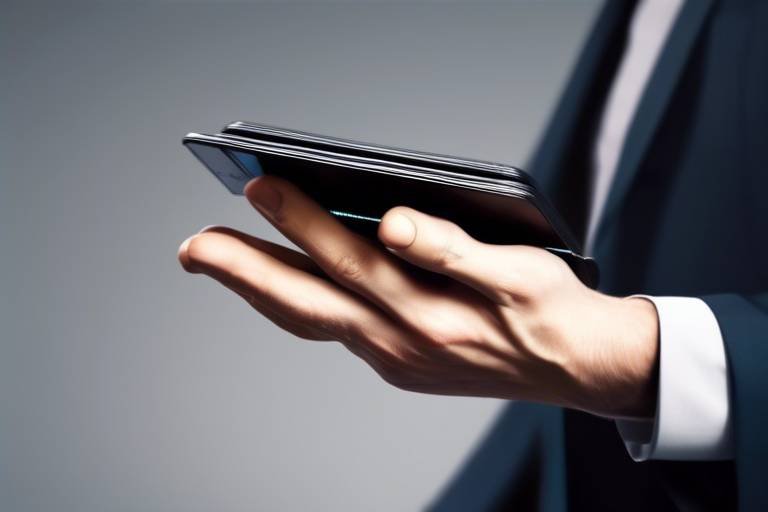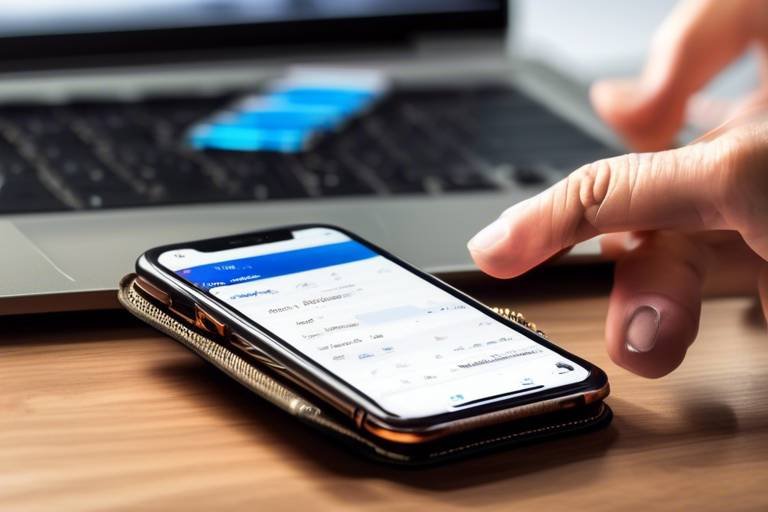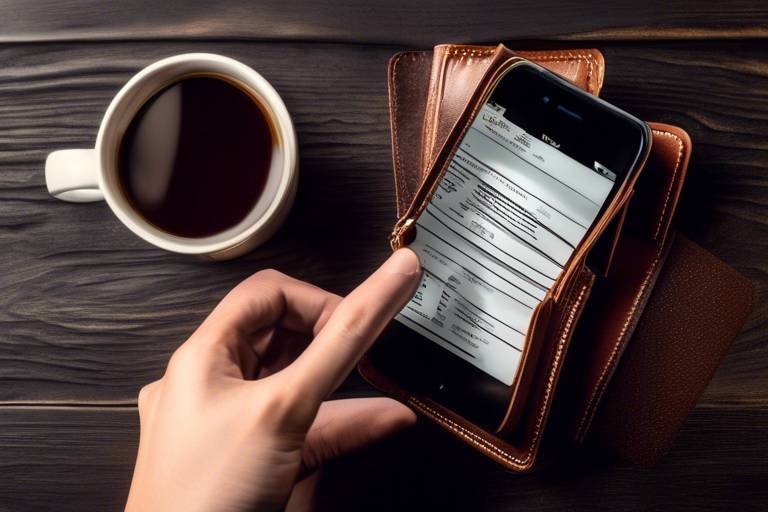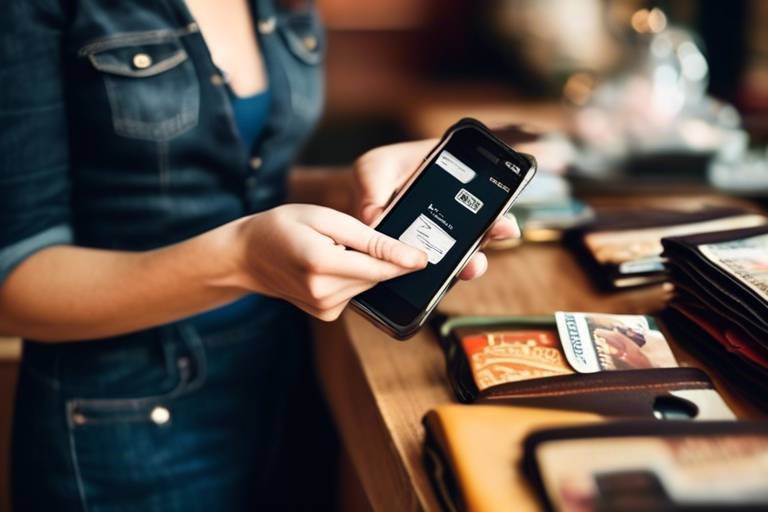How to Avoid Common Mistakes When Using Crypto Wallets
In the fast-paced world of cryptocurrency, managing your digital assets can feel a bit like walking a tightrope. One small misstep, and you could find yourself in a precarious situation. This article dives deep into the common pitfalls users face with crypto wallets and offers practical advice to enhance security and usability, ensuring a smoother experience in managing your digital assets. Whether you're a seasoned investor or just dipping your toes into the crypto waters, understanding how to navigate these challenges is crucial.
First things first, let’s break down what crypto wallets really are. Think of a crypto wallet as your digital bank account for cryptocurrencies. However, unlike a traditional bank, you hold the keys to your wallet, which means you have full control over your funds. There are two main types of wallets: hot wallets and cold wallets. Hot wallets are connected to the internet, making them convenient for daily transactions, while cold wallets are offline, providing a higher level of security for long-term storage. Understanding these options is essential for effectively managing your cryptocurrencies.
Now that you have a grasp of what crypto wallets are, the next step is choosing the right one for your needs. This decision hinges on several factors, including security, accessibility, and compatibility with various cryptocurrencies. For instance, if you’re someone who trades frequently, a hot wallet might be more suitable due to its ease of access. On the other hand, if you’re looking to hold your assets long-term, a cold wallet could be the safer bet. The key is to assess your personal needs and make an informed choice.
Let’s dive a little deeper into the differences between hot and cold wallets. Hot wallets, while convenient, are like leaving your front door unlocked; they’re accessible but can be vulnerable to cyberattacks. Cold wallets, in contrast, are akin to a safe deposit box in a bank—secure and offline, making them ideal for storing large amounts of cryptocurrency. Here’s a quick comparison:
| Feature | Hot Wallets | Cold Wallets |
|---|---|---|
| Accessibility | High | Low |
| Security | Moderate | High |
| Best For | Trading | Long-term Storage |
Hot wallets come equipped with various security features to protect your assets. For instance, many offer two-factor authentication (2FA), which adds an extra layer of security by requiring a second form of identification. Additionally, encryption is commonly used to safeguard your data. However, while these features can enhance security, it’s essential to remember that no system is foolproof. Always stay vigilant and practice safe online habits.
Cold wallets provide a fortress for your cryptocurrencies. By storing your assets offline, you drastically reduce the risk of hacking. This makes them the preferred choice for serious investors who plan to hold their cryptocurrencies for an extended period. Cold wallets also allow you to keep your private keys safe from prying eyes, ensuring that only you have access to your funds.
Now that you understand the types of wallets, let’s talk about the common mistakes users make when managing them. One of the biggest blunders is using weak passwords. It’s tempting to go with something simple, but a strong password is your first line of defense. Additionally, neglecting backup measures can lead to disaster if you lose access to your wallet. Always remember to keep your recovery phrases and private keys stored safely, as these are your lifeline to your assets.
Speaking of backups, let’s highlight their importance. Backing up your wallet information is crucial for ensuring that you can regain access to your assets in case of device loss or failure. Imagine losing your wallet and realizing you didn’t write down your recovery phrase—nightmare, right? To avoid this, always create secure backups of your wallet data.
When it comes to backups, think like a spy: be discreet and secure. Store your recovery phrases and private keys in a safe location, away from prying eyes. Consider using a fireproof safe or even a safety deposit box. The goal is to make it difficult for anyone but you to access this sensitive information.
If you ever find yourself in a situation where you need to restore access to your wallet, don’t panic! Follow these simple steps:
- Locate your recovery phrase or private key.
- Download the wallet software or app you initially used.
- Follow the prompts to restore your wallet using your recovery information.
By following these steps, you can regain access to your assets without unnecessary complications.
Finally, in the ever-evolving world of cryptocurrency, staying informed about the latest security trends is paramount. Cyber threats are constantly changing, and what worked yesterday might not work today. Regularly check reputable sources for updates on security practices to ensure your investments remain protected. After all, knowledge is power, especially in the digital realm.
- What is a crypto wallet? A crypto wallet is a digital tool that allows you to store and manage your cryptocurrencies.
- What are the types of crypto wallets? The two main types are hot wallets (online) and cold wallets (offline).
- How can I secure my crypto wallet? Use strong passwords, enable two-factor authentication, and keep your recovery phrases safe.
- What should I do if I lose access to my wallet? Use your recovery phrase or private key to restore access to your wallet.

Understanding Crypto Wallets
In the ever-evolving world of cryptocurrency, a crypto wallet serves as your gateway to managing digital assets. Think of it as a digital version of your traditional wallet, but instead of cash and cards, it holds your cryptocurrencies. These wallets don’t actually store the cryptocurrencies themselves; rather, they store the private keys that give you access to your digital assets on the blockchain. Understanding how these wallets function is crucial for anyone looking to dive into the crypto space.
There are primarily three types of crypto wallets: software wallets, hardware wallets, and paper wallets. Each type offers unique functionalities and security features tailored to different user needs. Software wallets can be further divided into hot wallets and cold wallets. Hot wallets are connected to the internet, making them convenient for everyday transactions, while cold wallets are offline, providing enhanced security for long-term storage.
To give you a clearer picture, here’s a simple table summarizing the types of wallets:
| Type of Wallet | Connection | Security Level | Best For |
|---|---|---|---|
| Hot Wallet | Online | Moderate | Frequent transactions |
| Cold Wallet | Offline | High | Long-term storage |
| Paper Wallet | Offline | Very High | Maximum security |
When choosing a crypto wallet, it’s essential to consider factors like security, accessibility, and compatibility with various cryptocurrencies. For instance, if you're an active trader, a hot wallet might suit you best due to its ease of access. However, if you’re holding onto your assets for the long haul, a cold wallet would be a more prudent choice. It's like deciding whether to keep your money in a checking account for easy access or a savings account that offers better security.
Another crucial aspect of understanding crypto wallets is the concept of public and private keys. Your public key is similar to your bank account number; it’s what you share with others to receive funds. On the other hand, your private key is akin to your bank password; it should be kept secret and secure at all costs. Losing your private key means losing access to your funds, which is a nightmare scenario for any crypto user.
In summary, grasping the fundamentals of crypto wallets is the first step in your cryptocurrency journey. By understanding the types of wallets available, their functionalities, and the importance of keys, you can navigate the crypto landscape with confidence and security.
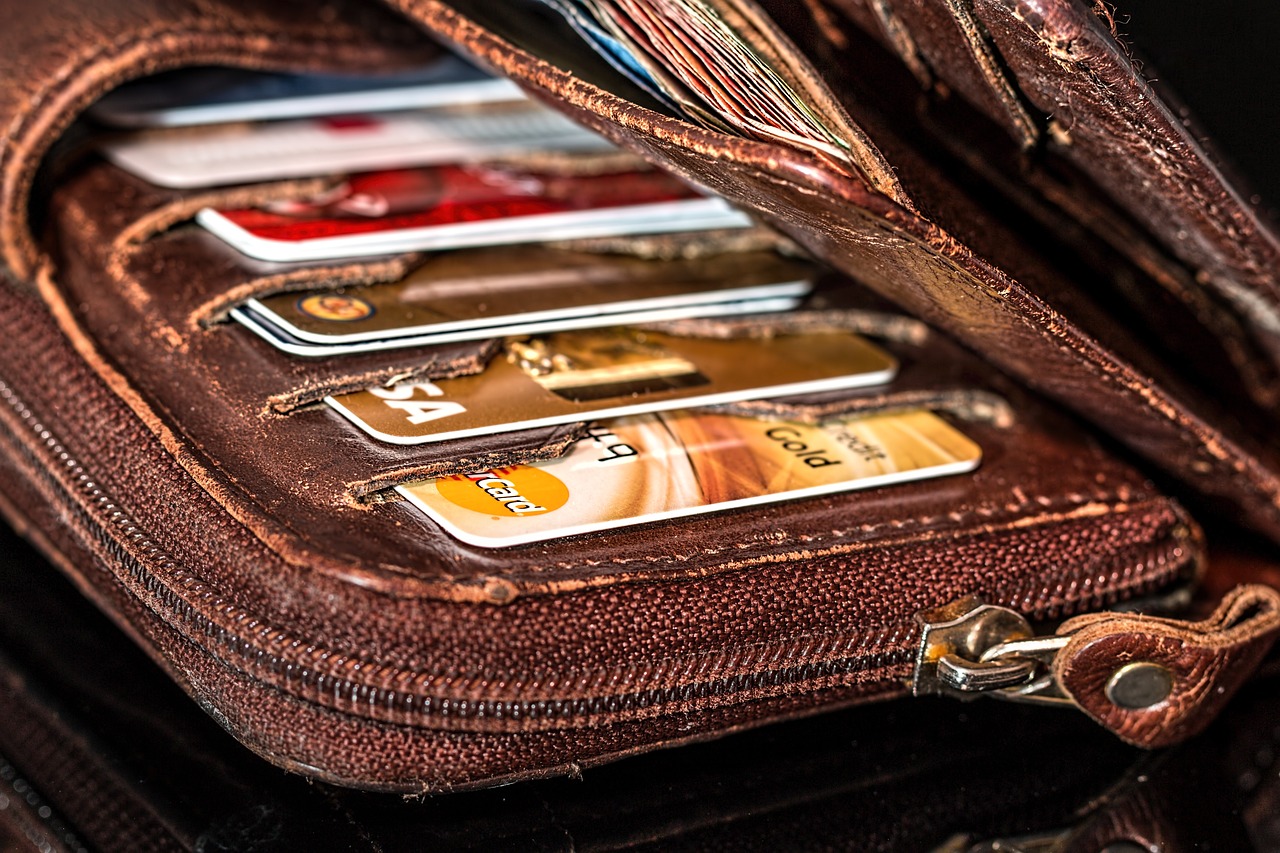
Choosing the Right Wallet
When diving into the world of cryptocurrencies, one of the most crucial decisions you'll make is . Think of your wallet as your digital safe; it not only stores your assets but also keeps them secure. With various types of wallets available, it’s essential to understand what each offers and how they align with your personal needs. Whether you’re a casual user or a serious investor, the right wallet can make a significant difference in your crypto journey.
First and foremost, consider your security needs. If you're planning to hold large amounts of cryptocurrency, opting for a wallet with robust security features is vital. Cold wallets, which store your assets offline, are generally regarded as the most secure option. They are less vulnerable to hacking and online threats. On the other hand, if you frequently trade or use your crypto for transactions, a hot wallet might be more suitable due to its accessibility. However, always ensure that it offers adequate security measures, such as two-factor authentication and encryption.
Next, think about accessibility. How often do you plan to access your wallet? For those who need to make frequent transactions, a hot wallet provides the convenience of quick access. However, if you’re more of a long-term holder, a cold wallet will serve you better. It's like choosing between a piggy bank you can easily break open and a safe that requires a key; both serve their purpose, but their usability varies based on your needs.
Compatibility is another critical factor. Not all wallets support every cryptocurrency. Before making a choice, check which digital assets you plan to store and ensure your wallet can accommodate them. Some wallets are designed specifically for certain coins, while others are more versatile. Here’s a quick comparison:
| Wallet Type | Security Level | Accessibility | Supported Cryptocurrencies |
|---|---|---|---|
| Hot Wallet | Medium | High | Varies |
| Cold Wallet | High | Low | Varies |
Finally, take into account the user interface and overall experience of the wallet. A wallet that’s difficult to navigate can lead to mistakes, especially when dealing with transactions. Look for wallets that offer a clean, intuitive design and provide clear instructions. It’s like choosing a car; you want something that’s not only reliable but also easy to drive!
In summary, when choosing the right wallet, weigh the factors of security, accessibility, compatibility, and user experience. By taking the time to evaluate these elements, you can ensure that your crypto assets are not only safe but also easily accessible when you need them. Remember, the right wallet is a personal choice that should cater to your individual needs and preferences.
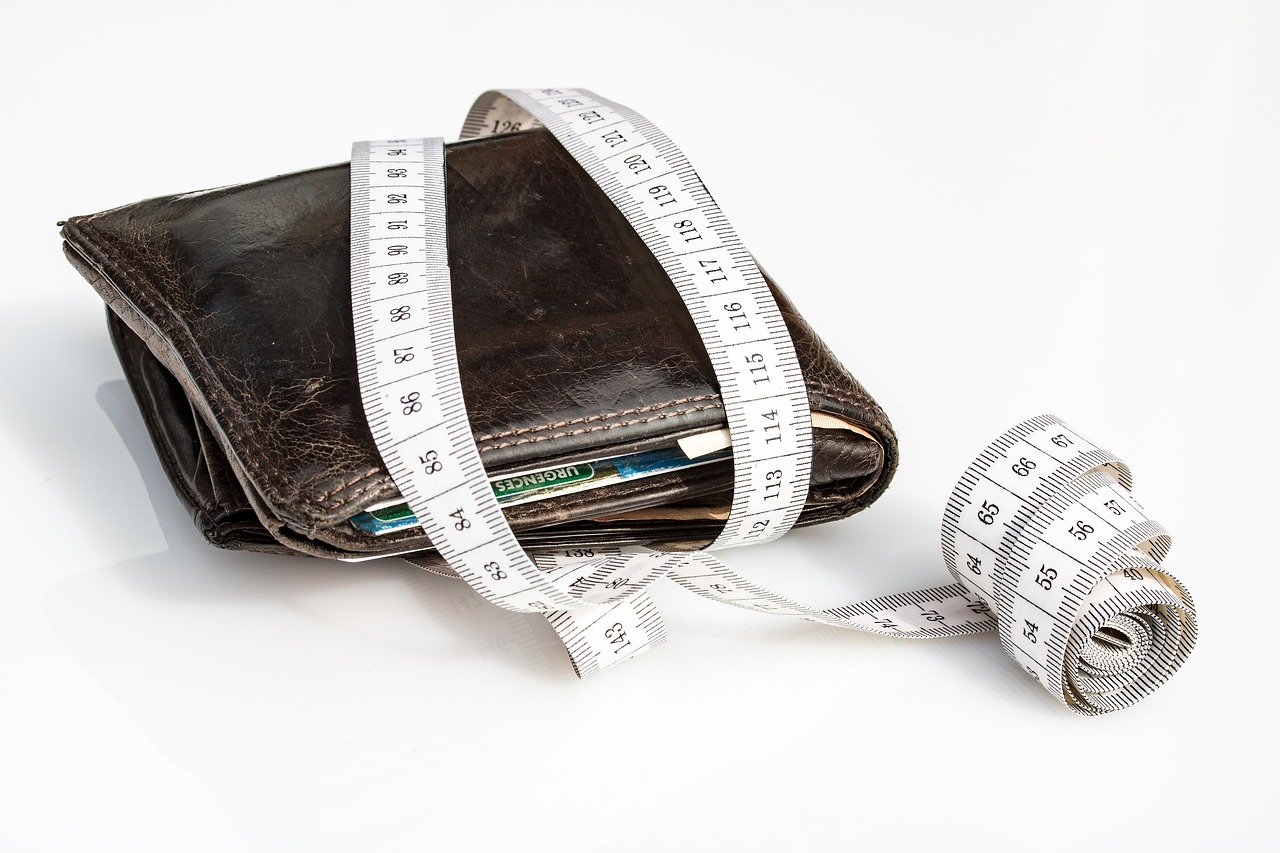
Hot Wallets vs. Cold Wallets
When diving into the world of cryptocurrency, one of the first decisions you'll face is whether to use a hot wallet or a cold wallet. These two types of wallets serve the same primary purpose—storing your digital assets—but they do so in very different ways. Understanding the differences between them is crucial for anyone looking to manage their crypto effectively.
Hot wallets are connected to the internet, which makes them incredibly convenient for daily transactions. Think of them as your online bank account; you can quickly send or receive funds with just a few clicks. However, this constant connectivity comes with risks. Since hot wallets are online, they are more susceptible to hacking and phishing attacks. Some common types of hot wallets include:
- Web wallets
- Mobile wallets
- Desktop wallets
On the flip side, we have cold wallets, which are not connected to the internet. Imagine them as a safe deposit box; your valuables are secure and protected from online threats. Cold wallets are ideal for long-term storage of cryptocurrencies, especially for those who don’t plan on making frequent transactions. They come in various forms, including:
- Hardware wallets
- Paper wallets
To better illustrate the differences, let's take a look at a quick comparison:
| Feature | Hot Wallets | Cold Wallets |
|---|---|---|
| Connectivity | Always online | Offline |
| Security | Vulnerable to hacks | Highly secure |
| Convenience | Very convenient for transactions | Less convenient, requires extra steps to access |
| Best Use Case | Frequent trading | Long-term storage |
Ultimately, the choice between hot and cold wallets depends on your individual needs. If you’re an active trader who regularly buys and sells cryptocurrencies, a hot wallet might be your best bet for quick access. However, if you’re a serious investor looking to hold onto your assets for a longer period, a cold wallet offers the peace of mind that comes with enhanced security.
In conclusion, understanding the strengths and weaknesses of both hot and cold wallets is essential for anyone navigating the crypto landscape. By choosing the right type of wallet, you can better protect your investments while enjoying the benefits of digital currency.
1. Can I use both hot and cold wallets?
Absolutely! Many users opt to use both types of wallets to balance convenience and security. You can keep a portion of your assets in a hot wallet for trading and the majority in a cold wallet for safekeeping.
2. Are cold wallets completely safe?
While cold wallets offer enhanced security, no method is entirely foolproof. It's essential to follow best practices, such as keeping your recovery phrases secure and using reputable wallet providers.
3. How do I choose the best hot wallet?
Look for a hot wallet that offers strong security features, such as two-factor authentication and encryption, along with a user-friendly interface. Research user reviews and ensure the wallet supports the cryptocurrencies you plan to use.
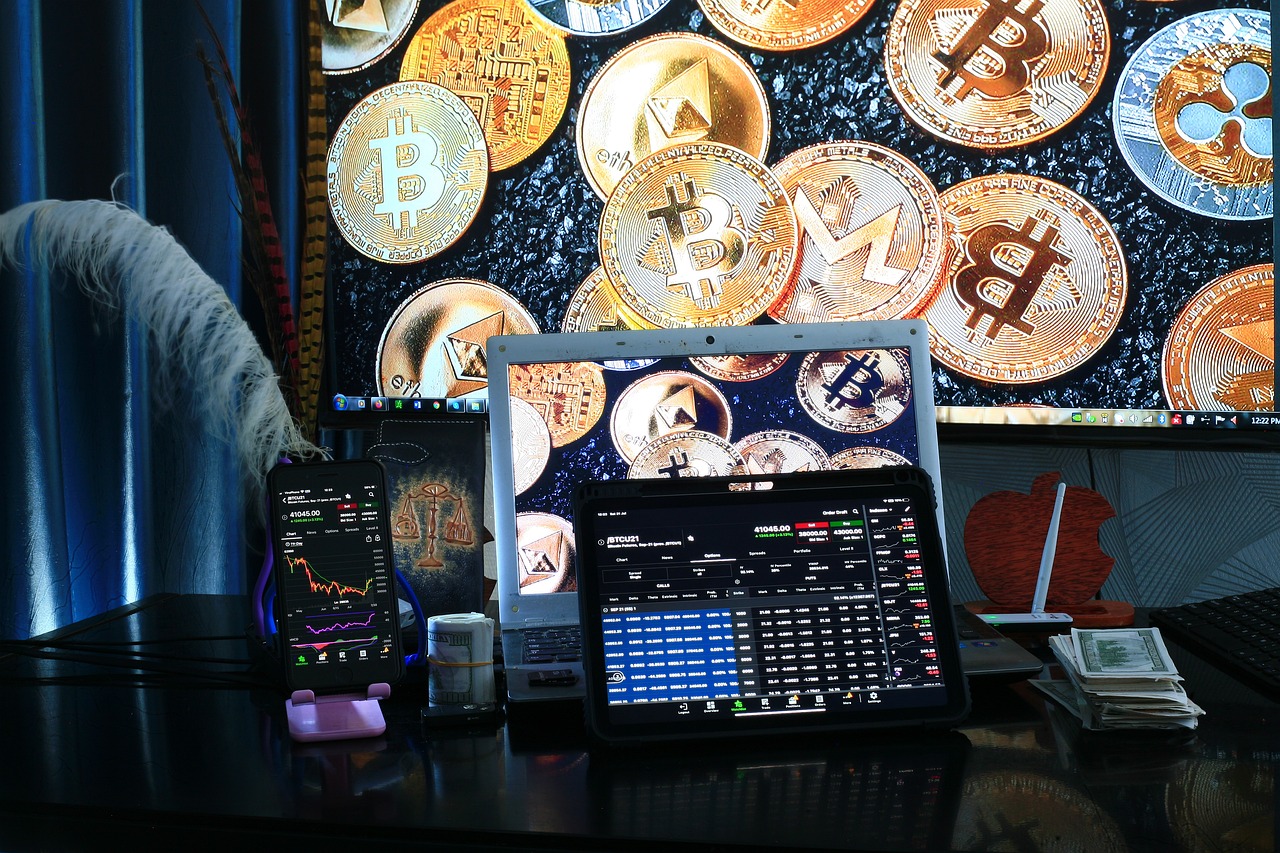
Security Features of Hot Wallets
Hot wallets are a popular choice among cryptocurrency enthusiasts due to their ease of use and accessibility. However, with great convenience comes the need for robust security measures to protect your digital assets. One of the primary security features of hot wallets is two-factor authentication (2FA). This extra layer of security requires users to provide two forms of identification before accessing their wallet, making it significantly harder for unauthorized users to gain entry. For instance, after entering your password, you may also need to input a code sent to your mobile device. This means that even if someone were to obtain your password, they would still need access to your phone to log in.
Another important feature is encryption. Hot wallets often encrypt sensitive information like private keys and recovery phrases. This means that even if a hacker were to gain access to the wallet's database, they would find it challenging to decipher the encrypted data without the correct keys. Moreover, many hot wallets utilize multi-signature (multisig) technology, which requires multiple private keys to authorize a transaction. This can significantly enhance security, especially for businesses or individuals managing substantial amounts of cryptocurrency.
It's also worth mentioning that reputable hot wallet providers regularly update their software to patch vulnerabilities and enhance security features. Staying updated with the latest versions can protect users from potential exploits. Additionally, many hot wallets offer transaction alerts, notifying users of any activity in their wallets, allowing for immediate action in case of suspicious transactions.
Ultimately, while hot wallets present certain risks due to their online nature, the advanced security features they offer can significantly mitigate these risks. Users must remain vigilant and practice good security hygiene, such as using strong, unique passwords and enabling all available security features. By doing so, you can enjoy the convenience of hot wallets while keeping your cryptocurrencies secure.
Q: What is a hot wallet?
A: A hot wallet is a type of cryptocurrency wallet that is connected to the internet, allowing for quick access and transactions. They are typically used for daily transactions and trading.
Q: Are hot wallets safe?
A: While hot wallets offer convenience, they are more vulnerable to hacking than cold wallets. However, implementing security features like 2FA and encryption can enhance their safety.
Q: Can I recover my assets if I lose access to my hot wallet?
A: Yes, most hot wallets provide recovery options, typically involving a recovery phrase or backup keys. It's crucial to back up this information securely.
Q: Should I use a hot wallet or a cold wallet?
A: It depends on your needs. Hot wallets are great for frequent transactions, while cold wallets are better for long-term storage and security.
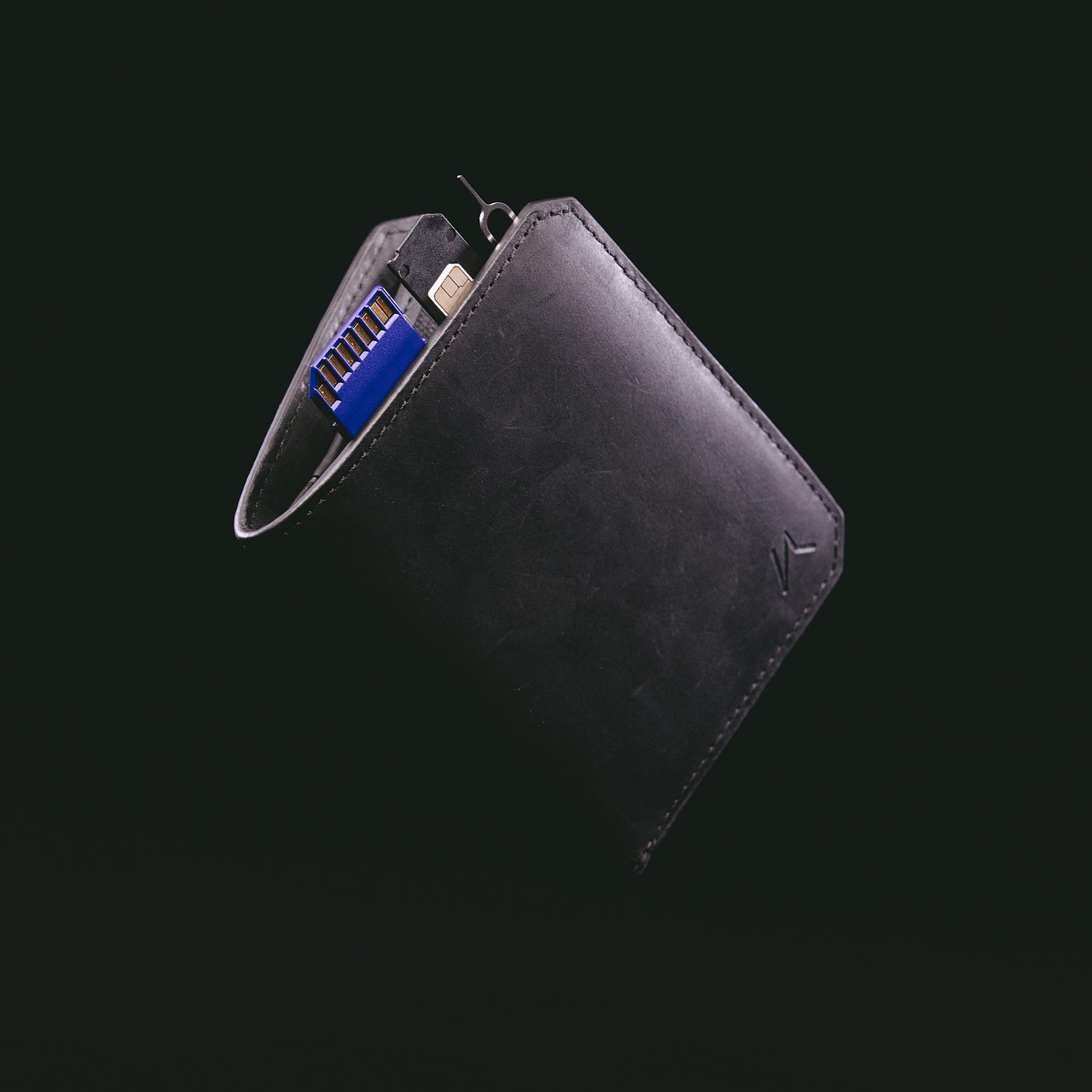
Benefits of Using Cold Wallets
When it comes to securing your cryptocurrencies, cold wallets stand out as a fortress against the ever-evolving landscape of cyber threats. Unlike hot wallets, which are connected to the internet, cold wallets store your digital assets offline, providing an extra layer of security that is hard to breach. Imagine keeping your valuable possessions in a bank vault instead of on your kitchen table—this is the essence of using a cold wallet.
One of the primary benefits of cold wallets is their enhanced security. Since they are not connected to the internet, the risk of hacking is significantly reduced. This makes cold wallets an ideal choice for serious investors who are looking to hold their cryptocurrencies for the long term. By keeping your assets offline, you can rest easy knowing that your investments are safe from online threats.
Another advantage is control. With cold wallets, you have complete control over your private keys. This means you are not reliant on third-party services that may be vulnerable to attacks or may even go out of business. You are the sole custodian of your digital assets, which is a powerful position to be in. This autonomy is especially appealing in a world where trust in centralized exchanges is waning.
Cold wallets also allow for easy storage of multiple cryptocurrencies. Many cold wallets support a wide range of digital currencies, making it convenient for users to manage diverse portfolios in one secure place. Whether you hold Bitcoin, Ethereum, or lesser-known altcoins, a cold wallet can accommodate your needs without compromising security.
Moreover, cold wallets are often designed with user-friendliness in mind. Many of them come with intuitive interfaces that make it easy for both beginners and experienced users to navigate. This means you don’t need to be a tech wizard to safely store your cryptocurrencies. For instance, you can easily create transactions offline and then connect to the internet to execute them, ensuring that your private keys never leave the secure environment of your cold wallet.
In summary, the benefits of using cold wallets are clear:
- Enhanced Security: Offline storage significantly reduces the risk of hacking.
- Complete Control: You own your private keys, eliminating reliance on third parties.
- Multi-Currency Support: Store various cryptocurrencies in one secure location.
- User-Friendly Design: Easy to use for both beginners and experienced crypto enthusiasts.
For anyone serious about cryptocurrency investments, cold wallets are not just an option; they are a necessity. By choosing to store your assets offline, you are taking a proactive step to safeguard your financial future. Just like you wouldn’t leave your house unlocked, don’t leave your digital assets exposed to potential threats. Invest in a cold wallet and give your cryptocurrencies the protection they deserve.
- What is a cold wallet? A cold wallet is a type of cryptocurrency wallet that stores digital assets offline, providing enhanced security against hacking.
- Are cold wallets completely safe? While cold wallets offer superior security, no storage solution is entirely risk-free. It's essential to follow best practices for backup and recovery.
- Can I access my cryptocurrencies easily with a cold wallet? Yes, cold wallets are designed to be user-friendly, allowing easy access and transaction management while keeping your assets secure.
- Do cold wallets support all cryptocurrencies? Many cold wallets support a wide range of cryptocurrencies, but it's important to check compatibility before purchasing.
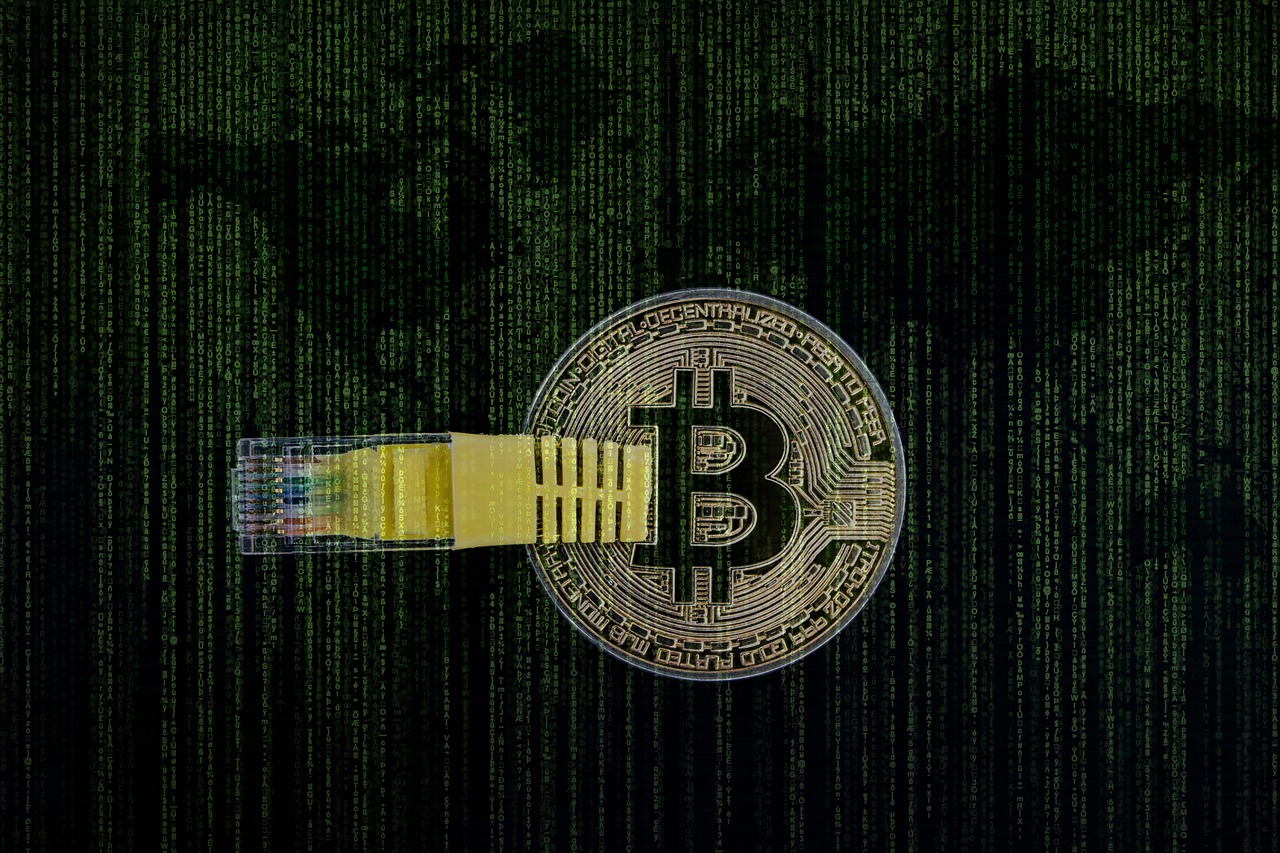
Common Mistakes to Avoid
When diving into the world of cryptocurrency, it's easy to get swept up in the excitement and potential profits. However, along with that thrill comes a myriad of common mistakes that can lead to devastating losses. One of the biggest blunders users make is utilizing weak passwords. Think of your password as the key to your treasure chest. If it's too simple, anyone can pick the lock! A strong password should be a mix of letters, numbers, and symbols, making it nearly impossible for hackers to guess. Additionally, many users often neglect to enable two-factor authentication (2FA). This extra layer of security acts as a formidable barrier against unauthorized access, so why skip it?
Another frequent pitfall is failing to back up wallet information. Imagine losing your wallet and not having a backup plan—it's a nightmare scenario! Users should regularly back up their wallet data and securely store recovery phrases and private keys. A good practice is to keep backups in multiple locations, such as a secure cloud service and a physical copy stored in a safe place. This redundancy ensures that even if one method fails, you still have access to your assets.
Moreover, many individuals mistakenly believe that their funds are safe simply because they are stored in a wallet. This is a dangerous misconception. While wallets are designed to hold your cryptocurrencies, they can still be vulnerable to hacks, particularly hot wallets that are connected to the internet. Therefore, it's crucial to stay informed about the security features of your chosen wallet and to regularly update your software to guard against potential threats.
Another common mistake is not keeping track of transaction fees. When trading cryptocurrencies, users often overlook the costs associated with transfers. These fees can vary significantly depending on the network congestion and wallet type, and failing to account for them can lead to unexpected losses. Always check the fee structure before making transactions!
In conclusion, avoiding these common mistakes can significantly enhance your experience in managing crypto wallets. By prioritizing security, backing up your information, and staying informed, you can navigate the digital asset landscape with confidence. Remember, in the world of cryptocurrencies, a little caution goes a long way!
- What is the most common mistake people make with crypto wallets? Many users often use weak passwords and neglect to enable two-factor authentication.
- How can I securely back up my wallet? Regularly back up your wallet data and store recovery phrases in multiple secure locations.
- Are hot wallets safe? Hot wallets are more convenient but can be vulnerable to hacks. Always ensure you have adequate security measures in place.
- What should I do if I lose my wallet? If you've backed up your wallet data properly, you can restore access using your recovery phrases and private keys.
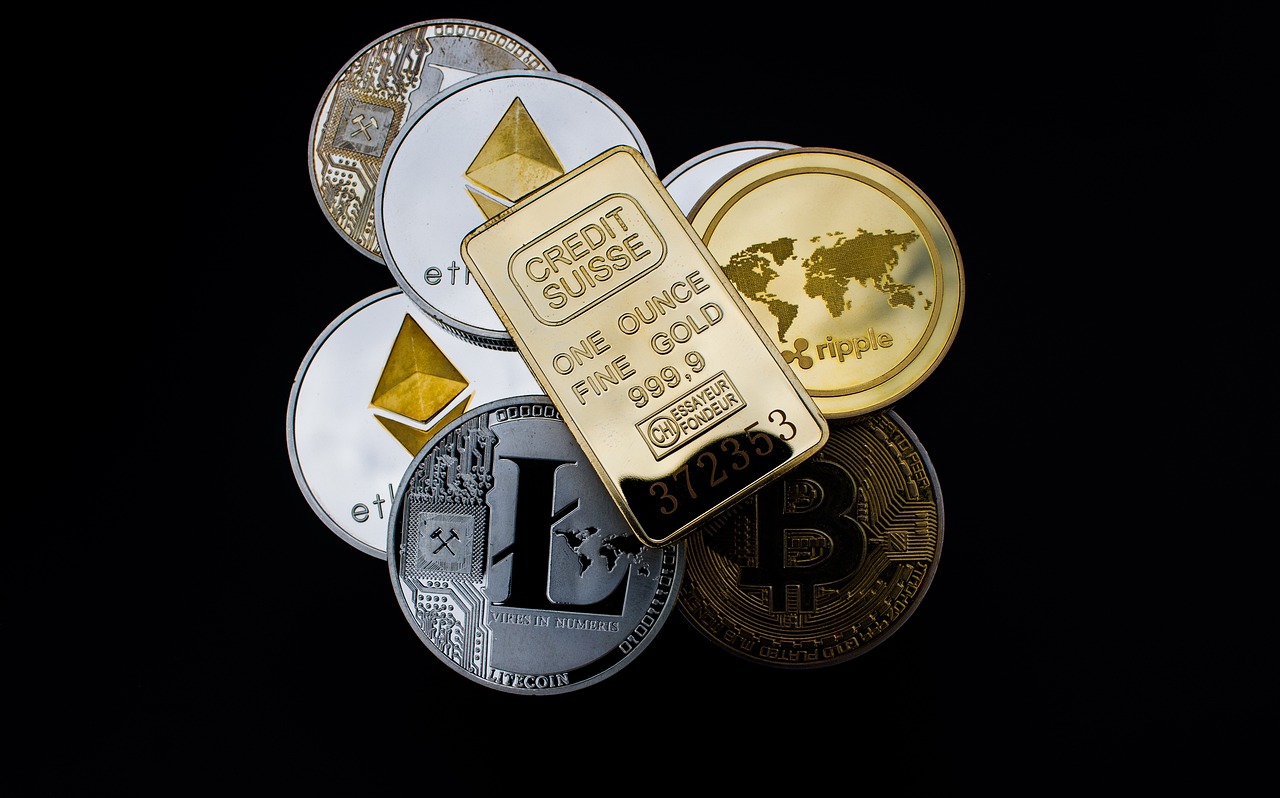
Backup and Recovery Strategies
When it comes to managing your cryptocurrency, one of the most crucial aspects that often gets overlooked is . Imagine losing access to your digital assets just because you didn’t safeguard your wallet information! It’s like throwing away your house keys and hoping they’ll magically reappear. To avoid such a nightmare, you need to ensure that you have a solid plan in place for backing up your wallet and recovering your assets in case of unforeseen circumstances.
First and foremost, let’s talk about the importance of backing up your wallet information. Your crypto wallet contains sensitive data like recovery phrases and private keys, which are the keys to your digital treasure chest. If you lose access to your wallet due to device failure or accidental deletion, having a backup means you can restore your access without breaking a sweat. Think of it as having a spare tire in your car; you might not need it every day, but when you do, it can save you from a lot of trouble.
Now, how do you go about creating secure backups? Here are some effective methods:
- Write It Down: One of the simplest and most reliable methods is to write down your recovery phrase and private keys on paper. Store this paper in a safe place, like a safe or a safety deposit box. Just make sure it’s not easily accessible to prying eyes!
- Use Encrypted USB Drives: Another option is to store your wallet information on an encrypted USB drive. This adds an extra layer of security, ensuring that even if someone gets their hands on your USB, they won’t be able to access your data without the encryption key.
- Cloud Storage with Encryption: While not the most recommended option due to potential vulnerabilities, if you choose to back up to the cloud, always ensure your files are encrypted. Services like Google Drive or Dropbox can be useful, but remember that security starts with you!
After creating your backups, the next step is knowing how to restore access to your wallet. This process can vary depending on the wallet you are using, but generally, it involves the following steps:
- Open Your Wallet Application: Start by launching the wallet application you initially used.
- Select 'Restore Wallet': Look for the option that allows you to restore a wallet. This is usually found in the settings or account section.
- Enter Your Recovery Phrase: Carefully input your recovery phrase or private key as prompted. Double-check for any typos, as even a single wrong character can lead to failure in restoring your wallet.
- Follow Additional Prompts: Depending on your wallet, you may need to follow further instructions to complete the restoration process.
By following these steps, you can ensure that your crypto assets remain safe and accessible even in the face of potential setbacks. Remember, being proactive about your backup and recovery strategies can save you from the heartache of losing your investments.
1. How often should I back up my wallet?
It's advisable to back up your wallet every time you make significant changes or transactions. Regular backups can help ensure that you have the most up-to-date information.
2. What happens if I lose my recovery phrase?
If you lose your recovery phrase, you may permanently lose access to your wallet and its contents. That's why it's crucial to store it securely and have multiple backups if possible.
3. Are there any risks associated with backing up my wallet online?
Yes, storing your wallet information online can expose you to potential hacking risks. If you choose to use cloud storage, make sure your files are encrypted and use strong passwords.
4. Can I restore my wallet on a different device?
Absolutely! As long as you have your recovery phrase or private key, you can restore your wallet on any compatible device.
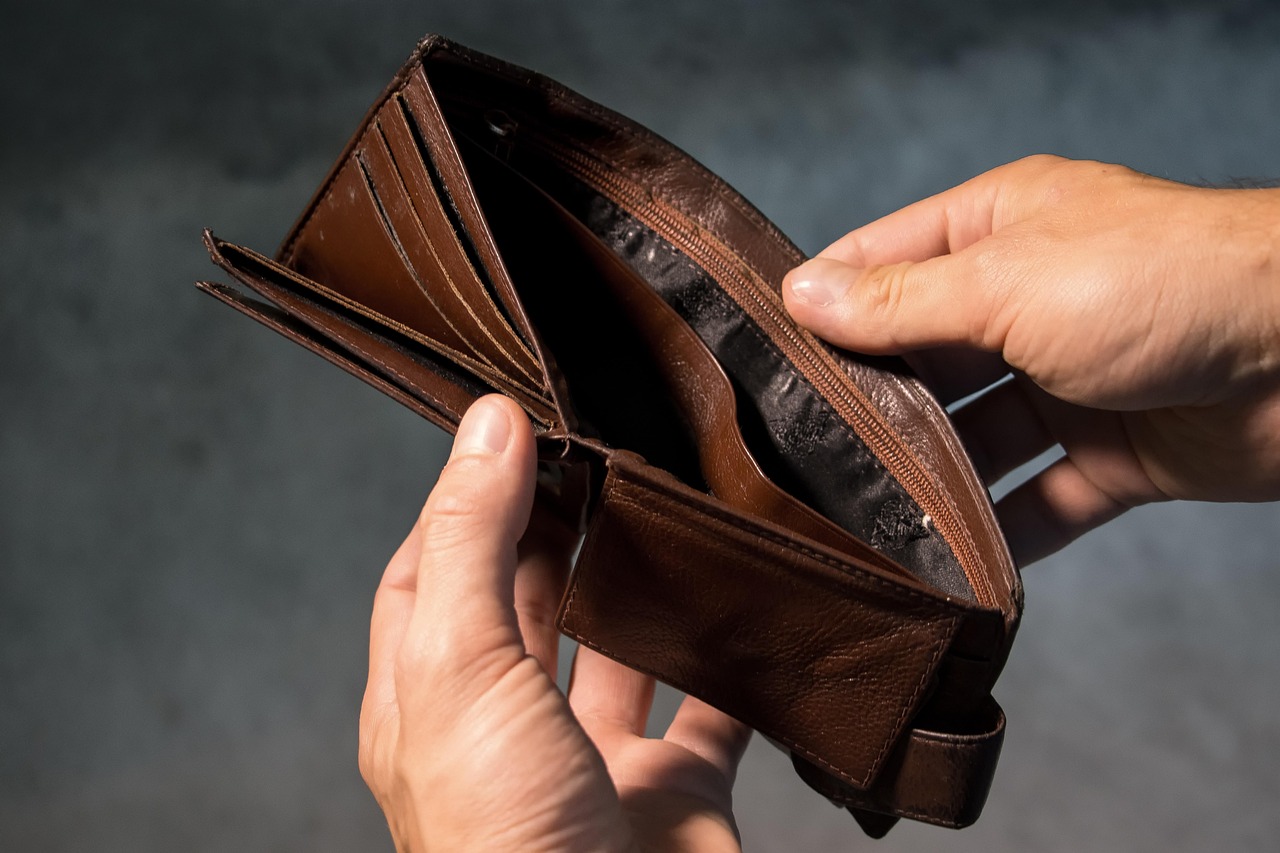
Creating Secure Backups
When it comes to managing your cryptocurrency, one of the most critical steps you can take is creating secure backups of your wallet data. Imagine losing access to your hard-earned digital assets simply because you didn’t take the time to back them up properly. It’s like leaving the front door of your house wide open while you go on vacation—an invitation for disaster! To avoid this, let's dive into some effective strategies for ensuring your backups are as secure as possible.
First and foremost, you should always store your recovery phrases and private keys in a safe location. This could be a fireproof safe, a safety deposit box, or even a trusted friend’s house. The key is to keep them away from prying eyes and potential online threats. Remember, if someone gets their hands on your recovery phrase, they can access your wallet and drain your funds in seconds!
Another crucial aspect of creating secure backups is to use multiple storage methods. Relying solely on one backup method is risky. Consider the following options:
- Paper backups: Write down your recovery phrase and private keys on paper. This old-school method is immune to hacking, but be sure to keep that paper safe from fire and water damage.
- USB drives: Store your wallet data on an encrypted USB drive. This provides a digital backup that can be easily transported, but remember to keep it secure and disconnected from the internet when not in use.
- Hardware wallets: These are physical devices specifically designed for storing cryptocurrencies. They are incredibly secure and often come with built-in backup features.
In addition to choosing the right storage methods, it’s essential to regularly update your backups. Each time you make a significant transaction or change your wallet settings, ensure that your backups reflect those changes. Think of it like updating your address book; if you move and don’t update your information, your friends will have a hard time finding you!
Finally, consider using encryption for your backups. This adds an extra layer of security, making it significantly harder for anyone to access your sensitive information. Encryption tools are widely available and can be a lifesaver in protecting your data from unauthorized access.
By following these strategies, you can create secure backups that protect your cryptocurrency investments. Remember, in the world of digital assets, a little caution goes a long way. So take the time to set up your backups properly, and you can rest easy knowing your assets are safe and sound.

Restoring Access to Your Wallet
Restoring access to your crypto wallet can feel like finding a needle in a haystack, especially when your digital assets are on the line. But fear not! With the right steps, you can reclaim your wallet and secure your investments. First things first, it’s crucial to have your backup information handy, which usually consists of your recovery phrase or private keys. Think of these as the keys to your digital treasure chest; without them, you might as well be locked out of Fort Knox!
To begin the restoration process, follow these simple steps:
- Locate Your Backup: Start by finding your recovery phrase or private key. This information is typically provided when you first set up your wallet. If you’ve stored it in a secure location, now’s the time to retrieve it.
- Download the Wallet Software: If you need to restore your wallet on a new device, download the same wallet software you originally used. This ensures compatibility and a smoother restoration process.
- Initiate the Restore Process: Open the wallet application and look for the option to restore or recover a wallet. This is often found on the main screen or within the settings menu.
- Input Your Recovery Phrase: Enter your recovery phrase carefully. It’s essential to input each word exactly as it appears, including the correct order. One wrong letter could mean the difference between regaining access and hitting a brick wall!
- Set Up a New Password: Once your wallet is restored, you’ll likely be prompted to create a new password. Choose something strong and memorable, as this will protect your assets moving forward.
After following these steps, you should have regained access to your wallet and all your precious cryptocurrencies. However, if you encounter any issues along the way, don't hesitate to consult the support resources provided by your wallet provider. They often have detailed guides or customer support teams ready to assist you.
Remember, the key to avoiding future headaches is to keep your backup information secure and accessible. Consider storing it in multiple safe locations, like a password manager or a physical safe, to ensure it’s always within reach when you need it most. Just as we wouldn’t leave our house keys lying around, we should treat our crypto keys with the same level of care!
- What should I do if I lost my recovery phrase? Unfortunately, if you lose your recovery phrase, you may not be able to access your wallet. Always store it in a secure, memorable place.
- Can I restore my wallet on a different device? Yes, as long as you have your recovery phrase or private key, you can restore your wallet on any compatible device.
- Is it safe to share my recovery phrase? Absolutely not! Your recovery phrase is private and should never be shared with anyone. Treat it like your bank account password.

Staying Updated on Security Practices
In the fast-paced world of cryptocurrency, staying informed about the latest security practices is not just a good idea—it's a necessity. The crypto landscape is constantly evolving, with new threats and vulnerabilities emerging almost daily. Just like a seasoned sailor keeps an eye on the weather to avoid storms, crypto users must monitor the shifting tides of security trends to safeguard their digital assets. But how can you stay updated? Here are some practical strategies.
First and foremost, subscribing to reputable crypto news outlets and blogs can be incredibly beneficial. These sources often provide timely updates on security breaches, new technologies, and best practices. Think of them as your lighthouse in the fog—guiding you safely through the murky waters of digital finance. Some well-known sites include:
- CoinDesk
- CryptoSlate
- CoinTelegraph
Additionally, joining online communities, such as forums or social media groups, can offer real-time insights and shared experiences from other users. Platforms like Reddit and Twitter are great places to engage with fellow crypto enthusiasts who often share the latest news and security tips. It's like having a network of friends who are all looking out for each other—keeping you informed about potential threats or useful tools.
Moreover, consider following industry leaders and security experts on social media. Many of them share valuable information and updates that can help you stay ahead of the curve. Think of them as your personal trainers in the gym of cryptocurrency security—always pushing you to improve and stay alert.
Another crucial aspect of staying updated is understanding the importance of regular software updates. Just as you wouldn’t drive a car with outdated brakes, you shouldn’t use a crypto wallet that hasn’t been updated. Software developers frequently release updates to patch vulnerabilities and improve security features. Make it a habit to check for updates regularly and install them promptly. This simple practice can significantly reduce your risk of falling victim to cyberattacks.
Lastly, consider attending webinars, conferences, or workshops focused on cryptocurrency and security. These events often feature expert speakers who provide insights into emerging threats and best practices. They can also be a great opportunity to network with other crypto enthusiasts and professionals. It's like being part of an exclusive club where everyone is dedicated to improving their knowledge and skills.
In summary, staying updated on security practices in the crypto space is essential for protecting your investments. By leveraging multiple sources of information, engaging with the community, and keeping your software up to date, you can create a robust defense against potential threats. Remember, in the world of cryptocurrency, knowledge is power, and staying informed is your best strategy for success.
| Question | Answer |
|---|---|
| What are the best ways to stay updated on crypto security? | Subscribe to reputable crypto news sites, join online forums, follow industry experts on social media, and attend relevant events. |
| How often should I update my crypto wallet? | Regularly check for updates and install them as soon as they are available to ensure maximum security. |
| Are there any specific resources for learning about crypto security? | Yes, websites like CoinDesk, CryptoSlate, and CoinTelegraph offer valuable information on security practices. |
Frequently Asked Questions
- What is a crypto wallet?
A crypto wallet is a digital tool that allows you to store, send, and receive cryptocurrencies. Think of it as a virtual bank account where your digital assets are kept safe. There are different types of wallets, including hot wallets (online) and cold wallets (offline), each serving unique purposes.
- How do I choose the right crypto wallet?
Choosing the right wallet depends on your individual needs. If you’re looking for quick access for trading, a hot wallet might be ideal. However, if you’re holding assets long-term, consider a cold wallet for enhanced security. Always evaluate the wallet's security features, accessibility, and compatibility with your preferred cryptocurrencies.
- What are the common mistakes to avoid with crypto wallets?
Common mistakes include using weak passwords, failing to enable two-factor authentication, and neglecting to back up your wallet. These oversights can lead to significant losses, so it’s crucial to implement strong security measures and regularly back up your data.
- How do I create secure backups of my wallet?
To create secure backups, write down your recovery phrase and private keys on paper and store them in a safe place. Avoid digital storage for this sensitive information to reduce the risk of hacking. Consider using a safe or safety deposit box for added protection.
- What should I do if I lose access to my wallet?
If you lose access, don’t panic! Use your backup information to restore access to your wallet. Follow the wallet provider's recovery process, which typically involves entering your recovery phrase or private key. This step is crucial to regain control of your assets.
- How can I stay updated on security practices in the crypto space?
Stay informed by following reputable cryptocurrency news sources, joining online forums, and subscribing to newsletters. Engaging with the community can help you learn about the latest security trends and practices to protect your investments effectively.


